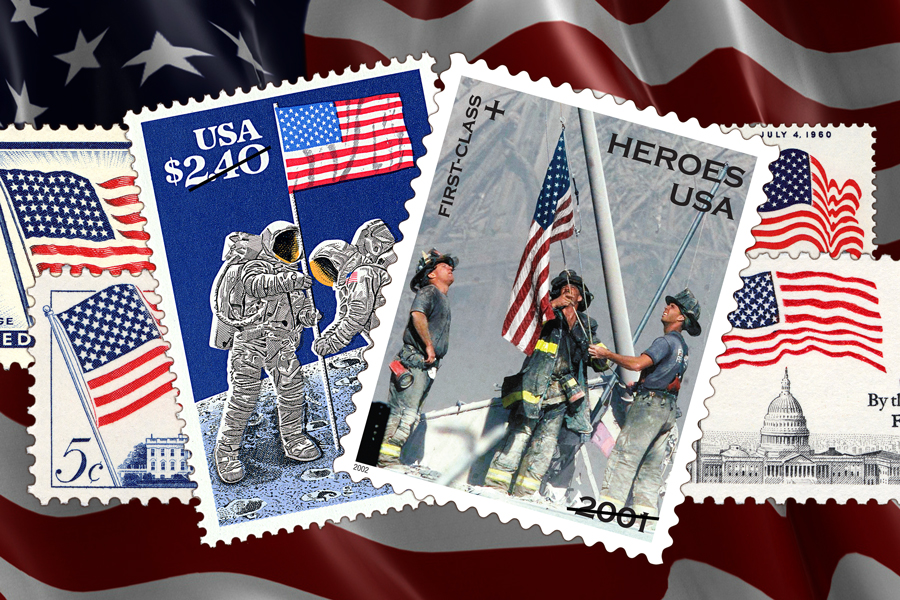The Postal Service’s latest U.S. Flag stamp continues a tradition that began more than a century ago. Here are five facts about flag stamps.
1. The first U.S. stamp to feature a flag was issued in 1869. The 30-cent stamp — which featured two flags, an eagle and a shield — was one of several “pictorial issues” that year. They were the first two-colored stamps and the first to feature something other than the bust or head of a dead American statesman. Other stamps in the series showed paintings, horses, trains and ships.
2. Almost a century later, flag stamps became more colorful. On July 4, 1957, the Post Office Department issued a 4-cent stamp that depicted a 48-star flag — the first stamp to depict the flag in red, white and blue. To produce the stamps, the Bureau of Engraving and Printing used a special press for the first time.
3. Not everyone was a fan of the 1957 stamp. Because postage requires cancellation, some collectors and others opposed the release of a full-color flag stamp. They saw the cancellation as a desecration of the flag. Other collectors saw the stamp as a beautiful tribute to the nation’s most sacred symbol.
4. The first 50-star stamp flag debuted three years later. The 4-cent stamp, issued July 4, 1960, was the first to show the American flag with all 50 stars, celebrating Hawaii’s addition as the nation’s 50th state.
5. U.S. flags are now stamp fixtures. During the past six decades, many stamps depicting the flag have been issued. These include stamps that show Old Glory flying over landmarks (the White House, the U.S. Capitol) and being raised during historic moments (the 1969 moon landing, at Ground Zero), as well as releases that showcase the flag itself.
Got ideas for future editions of “The list”? Email them to uspslink@usps.gov.
